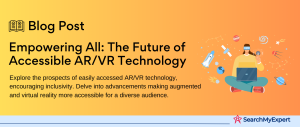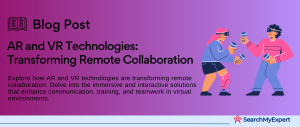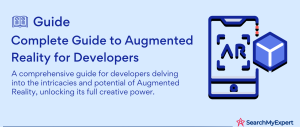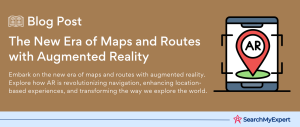VR for Training and Simulation
Virtual Reality (VR) is a technology that creates immersive, computer-generated environments that can simulate physical presence in places in the real world or imagined worlds. Unlike traditional user interfaces, VR places the user inside an experience, allowing them to interact with 3D worlds. By simulating as many senses as possible, such as vision, hearing, touch, and even smell, the technology creates an immersive environment that can replicate real-life scenarios or create fantastical settings.
The use of VR for training and simulation is particularly revolutionary. In sectors like education, healthcare, military, and aviation, VR has the potential to transform how skills and knowledge are acquired. It enables a safe and controlled environment where learners can practice and hone their abilities without the risks or costs associated with real-world training. For instance, medical students can perform virtual surgeries, pilots can experience flight simulations, and soldiers can engage in combat scenarios, all within a virtual setting.
This approach not only enhances learning experiences but also makes them more accessible and scalable. VR training and simulation combine the practicality of hands-on experience with the safety and flexibility of a virtual environment, paving the way for innovative and effective learning and skill development methodologies.
Benefits of VR Training
Virtual Reality (VR) training has emerged as a groundbreaking tool in various fields, offering numerous benefits over traditional training methods. These benefits range from enhanced engagement and learning retention to cost and time savings. Below, we delve into the key advantages of VR training.
Enhanced Engagement and Learning Retention
- Immersive Learning Experience:
VR creates a fully immersive environment, engaging multiple senses. This immersive experience is more engaging than traditional 2D learning materials like textbooks or video lectures. - Interactive Content: VR allows users to interact with the training material in a hands-on manner. This interaction leads to active learning, which is known to be more effective than passive learning methods.
- Customized Learning Paths:
VR can be programmed to adapt to the user’s learning pace and style, offering a personalized learning experience. This adaptation ensures that learners are neither bored nor overwhelmed. - Memorable Visuals and Experiences:
The 3D visuals and experiences provided by VR are more memorable compared to traditional methods. Learning through doing and seeing in a VR environment helps in better information retention.
Increased Safety
- Risk-Free Environment:
VR offers a safe platform for training in potentially hazardous scenarios, such as chemical plant operations, flight simulations, or medical surgeries. Trainees can make mistakes and learn from them without any real-world risks. - Stress and Fear Reduction: Knowing that the environment is simulated helps reduce the fear of making mistakes. This reduction in stress can lead to a more confident and competent workforce.
- Emergency Preparedness: VR can simulate emergency situations, allowing trainees to practice their response to high-stress situations in a controlled environment.
Realistic Scenario Replication
- High-Fidelity Simulations:
VR can replicate real-world scenarios with high fidelity, providing learners with realistic experiences. These simulations can include specific details and nuances of real-life situations. - Wide Range of Scenarios: With VR, it’s possible to simulate a vast array of scenarios that might be impractical or impossible to recreate in the real world due to constraints like location, safety, or feasibility.
- Immediate Feedback: VR environments can provide instant feedback, allowing learners to understand and correct their mistakes in real-time.
Cost and Time Savings
- Reduction in Travel and Accommodation: VR eliminates the need for travel to training centers, reducing costs and time spent on logistics.
- No Physical Equipment Required:
Many training programs require expensive equipment or setups. VR can simulate these, negating the need for actual equipment. - Scalability and Reusability:
Once a VR training program is developed, it can be scaled and reused for multiple trainees and locations, offering long-term cost savings.
Development of Soft Skills
- Enhanced Communication Skills:
VR scenarios can be designed to improve interpersonal and communication skills. Trainees can interact with virtual characters or real people in simulated environments. - Collaboration and Teamwork: Multi-user VR environments allow for the development of teamwork and collaboration skills. Teams can work together in virtual spaces, regardless of their physical location.
- Decision-Making Under Pressure:
VR can create high-pressure environments where trainees must make quick decisions, helping them to develop critical decision-making skills. - Empathy and Perspective Taking:
By simulating different scenarios, VR can help trainees understand and empathize with different perspectives, which is crucial in fields like healthcare and customer service.
Applications of VR Training Across Industries
Virtual Reality (VR) technology has found diverse and impactful applications across various industries, revolutionizing traditional training and education methodologies. Here, we explore how different sectors leverage VR for training purposes.
Healthcare: Enhancing Medical Proficiency
- Simulating Surgery:
VR allows surgeons to practice complex procedures in a risk-free environment. It provides a realistic experience of surgical procedures, helping to improve precision and reduce errors. - Patient Interactions and Diagnostics:
Medical professionals can use VR to simulate patient interactions, honing their diagnostic skills and bedside manners. This is particularly valuable for rare or complex medical conditions that practitioners may not frequently encounter. - Medical Procedure Training:
From basic procedures like drawing blood to more complex ones like endoscopy, VR provides a platform for healthcare professionals to practice and refine their skills.
Manufacturing: Ensuring Safety and Efficiency
- Equipment Operation Training:
VR simulates the operation of heavy machinery and equipment, allowing workers to gain familiarity with the controls and operations in a safe environment. - Maintenance Training:
VR helps in training maintenance staff on complex equipment, allowing them to practice in a virtual environment that mimics real-world scenarios without the risks. - Safety Protocol Education: VR is used to train employees on safety protocols, helping them understand and react to potential hazards in the manufacturing environment.
Aviation: Preparing for the Skies
- Flight Simulation for Pilots:
VR flight simulations provide pilots with realistic flying experiences, including handling emergency situations, thus enhancing their skills and preparedness. - Ground Crew Training: VR helps the ground crew understand and practice their roles, including aircraft handling, fueling, and maintenance tasks.
- Air Traffic Control Simulation:
VR is also used to train air traffic controllers, providing them with a realistic environment to practice managing multiple aircraft and complex scenarios.
Military: Strengthening Tactical and Combat Skills
- Combat Scenario Rehearsal:
VR enables soldiers to train in various combat scenarios, including urban warfare and jungle operations, enhancing their tactical skills without the risks of real combat. - Developing Tactical Skills:
Soldiers can use VR to practice strategies and tactics, enabling them to make quick, informed decisions in real combat situations. - Teamwork and Collaboration:
VR scenarios help in building teamwork and communication skills crucial for military operations.
Education: Transforming Learning Experiences
- Experiential Learning in History and Science: VR brings historical events and scientific concepts to life, offering students immersive and interactive learning experiences.
- Vocational Training:
VR is used in vocational education, such as automotive repair or electrical work, allowing students to practice skills in a realistic yet controlled environment. - Language and Cultural Education: VR can simulate different cultural environments for language learning, offering a more immersive and engaging way to learn a new language and understand its cultural context.
Corporate Training: Enhancing Professional Development
- Onboarding New Employees: VR can provide new employees with a virtual tour of the workplace, an overview of the company culture, and simulations of their job tasks.
- Leadership Skill Development: VR simulations can help develop leadership skills by placing individuals in leadership roles within various simulated scenarios, enhancing decision-making and team management skills.
- Customer Service Training: Employees can practice customer service scenarios in VR, improving their communication skills and ability to handle different types of customers.
Challenges and Considerations of VR Training
While Virtual Reality (VR) training offers numerous benefits, it also comes with its own set of challenges and considerations. Understanding these challenges is crucial for effectively implementing and maximizing the benefits of VR training.
Hardware and Software Costs
- High Initial Investment:
The cost of VR hardware (headsets, controllers, sensors) and software can be significant, especially for high-quality systems. This initial investment can be a barrier for smaller organizations or educational institutions. - Ongoing Development and Maintenance:
Beyond initial costs, continuous development and maintenance of VR content and platforms can be resource-intensive. Regular updates are necessary to keep the content relevant and the technology up-to-date.
Cybersickness and Discomfort
- Physical Discomfort:
Prolonged use of VR can lead to physical discomfort, including eye strain, headaches, and dizziness, known as cybersickness. - User Acclimatization:
Some users may take time to acclimatize to VR environments. Ensuring gradual introduction and the availability of support can help mitigate this issue.
Scenario Design and Learning Objectives
- Effective Scenario Design: Creating effective VR scenarios that accurately simulate real-life conditions is complex and requires expertise. Poorly designed simulations may lead to ineffective training outcomes.
- Alignment with Objectives: VR content must align with specific learning objectives. Without this alignment, the technology could become a gimmick rather than a useful training tool.
Accessibility and Inclusivity
- Physical Limitations: VR training might not be accessible to users with certain disabilities or physical limitations. This raises concerns about inclusivity and equal opportunities in training.
- Adaptation for Diverse Needs:
Making VR training accessible to all users, including adapting interfaces for different physical abilities, is a challenge that requires careful consideration and design.
Ethical Concerns and Data Privacy
- Psychological Impact: There’s a need to consider the psychological impact of VR training, especially in simulations of high-stress or traumatic scenarios. These experiences can have unintended consequences on an individual’s mental well-being.
- Data Privacy: VR systems collect a significant amount of data about users, including their movements, behaviors, and reactions. Ensuring the privacy and security of this data is crucial.
Emerging Trends and Future of VR Training
The field of Virtual Reality (VR) training is rapidly evolving, with emerging trends and technological advancements shaping its future. These developments promise to enhance the effectiveness, accessibility, and personalization of VR training programs. Let’s delve into some of these key trends.
Integration of Artificial Intelligence (AI)
- Personalized Training Experiences:
AI algorithms can analyze a user’s performance and learning style to personalize the training content, making it more effective and engaging. - Real-Time Feedback and Adaptation:
AI can provide immediate feedback to users, adapting the training scenario in real time based on their actions and decisions. This dynamic adjustment helps in creating more impactful learning experiences. - Performance Analysis and Insights:
AI can track and analyze a user’s performance over time, providing valuable insights into their progress and areas needing improvement.
Advancements in Haptic Technology
- Enhanced Physical Interaction:
Haptic technology is improving, allowing for more realistic touch sensations in VR. This advancement enhances the realism of VR training, especially in fields where tactile feedback is crucial, like surgery or mechanical repairs. - Simulating a Range of Textures and Resistances:
Future haptic technologies aim to simulate a variety of textures and resistances, providing a more diverse and realistic tactile experience in virtual environments.
Growth of Cloud-Based VR Platforms
- Scalability and Accessibility:
Cloud-based VR platforms are becoming more prevalent, offering scalable solutions that can be accessed remotely. This growth allows for more widespread adoption of VR training across different locations and organizations. - Reduced Hardware Dependency:
With cloud-based VR, the dependency on high-end hardware is reduced, as much of the processing can be done on the cloud. This shift could lower the entry barrier for organizations looking to implement VR training.
Increased Industry-Developer Collaboration
- Customized Training Solutions:
Collaborations between industry experts and VR developers are leading to more tailored and effective training solutions that meet specific industry needs. - Cross-Industry Learning:
These collaborations also open opportunities for learning and innovation transfer across different sectors, leading to more advanced and versatile VR training tools.
Real-World Examples of Successful VR Training Implementations
The implementation of Virtual Reality (VR) training has yielded significant results across various industries. These real-world examples illustrate how VR has improved performance, reduced costs, and even saved lives.
Healthcare: Enhancing Surgical Skills
- Case Study – Johns Hopkins University:
Surgeons at Johns Hopkins University used VR to practice complex surgical procedures. This practice led to a notable improvement in their precision and efficiency during actual surgeries. Surgeons reported better preparation and increased confidence when operating on patients. - Testimonial:
A senior surgeon remarked, “VR training has revolutionized our surgical training program. It allows us to prepare for complex surgeries in ways we couldn’t have imagined a decade ago.”
Aviation: Improving Pilot Training
- Case Study – Lufthansa Aviation Training:
Lufthansa implemented VR to train their pilots, resulting in enhanced training efficiency and reduced costs. The VR simulations allowed pilots to practice in numerous flight scenarios, significantly improving their response to real-life emergencies. - Testimonial:
A Lufthansa pilot shared, “The VR flight simulations were incredibly realistic and allowed me to experience and handle situations that are impossible to replicate in regular training.”
Military: Tactical Training and Mission Preparation
- Case Study – United States Army:
The U.S. Army has utilized VR for combat training and mission rehearsal. This approach has been crucial in preparing soldiers for real-world scenarios, reducing the risk of casualties and improving mission success rates. - Testimonial: An army officer said, “VR training has been a game-changer in our tactical training. It allows our soldiers to experience and adapt to diverse combat situations in a controlled environment.”
Manufacturing: Enhancing Safety and Efficiency
- Case Study – Boeing: Boeing employed VR for training assembly line workers, leading to improved safety and efficiency. The VR training helped workers understand complex machinery and processes better, reducing the risk of accidents and errors.
- Testimonial:
A Boeing training manager noted, “VR has significantly reduced our training times and costs while improving safety and performance on the assembly line.”
Corporate Training: Developing Soft Skills
- Case Study – Walmart:
Walmart used VR for employee training, focusing on customer service and management skills. This training led to improved customer satisfaction and employee performance. - Testimonial:
A Walmart store manager commented, “The VR training modules for customer service have greatly improved our team’s ability to handle various customer interactions effectively.”
Education: Transforming Learning Experiences
- Case Study – Stanford University:
Stanford University integrated VR into its educational curriculum, offering students immersive learning experiences in science and history. This integration has led to increased engagement and a better understanding of complex subjects. - Testimonial:
A Stanford professor stated, “VR has transformed how we teach and how our students learn. The immersive experience creates a deeper understanding and retention of the subject matter.”
The Promising Future of VR in Training and Skill Development
The exploration of Virtual Reality (VR) in training and skill development has revealed numerous advantages and exciting potential. VR’s unique ability to create immersive, interactive environments offers a revolutionary approach to learning and skill acquisition across various industries. Here are the key takeaways from our discussion:
- Enhanced Learning Experience:
VR provides an immersive learning environment, significantly increasing engagement and retention compared to traditional training methods. - Safe and Controlled Training: Particularly in high-risk fields, VR offers a safe platform for training, allowing for the practice of skills without real-world risks.
- Cost-Effective and Scalable: The long-term benefits of VR, including the reduction of travel, equipment, and material costs, make it a cost-effective solution for organizations.
- Personalization and Accessibility:
The integration of AI and advancements in technology allow for personalized training experiences. While there are challenges in accessibility, ongoing developments aim to make VR training inclusive for all users. - Real-World Impact:
From healthcare to aviation, military, and corporate training, real-world implementations of VR have shown significant improvements in performance, efficiency, and safety. - Future Growth and Innovation:
Emerging trends like AI integration, advanced haptic feedback, and cloud-based VR platforms suggest a future of continuous growth and innovation in VR training.
As we look ahead, the promise of VR in revolutionizing training and skill development is unmistakable. Its ability to adapt to various learning needs, simulate complex scenarios, and provide immersive experiences positions VR as a crucial tool in the future of education and professional development.
Conclusion:
Virtual Reality (VR) stands at the forefront of a learning revolution, offering unparalleled immersion, interaction, and personalization in training and skill development. Its impact spans across diverse sectors, from healthcare and aviation to the military and corporate environments, demonstrating significant advancements in performance, safety, and cost-efficiency. With emerging trends like AI integration and haptic technology, VR’s future in training is not just promising but transformative.
Embracing VR in learning and development strategies is no longer a futuristic concept but a practical step towards innovative and effective education and professional growth. As VR continues to evolve, its role in shaping the future of training and skill development becomes increasingly vital, urging continuous exploration and investment in this groundbreaking technology.
Let our AR & VR Development Service Company be your gateway to advanced realities.
Table of Contents
Toggle






